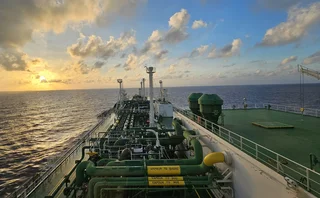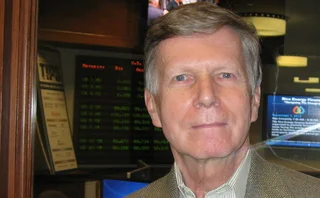Monitoring failure: limited progress for commodities firms
Majority of market participants unprepared for position limits regime

Two recent announcements should ease market worries about the absolute level of European position limits. What firms will now fret about is having the right systems and procedures to monitor their positions so they can fit them under the thresholds, whenever they are eventually set.
The picture is not encouraging. Nearly three-quarters of the roughly 150 commodity market participants polled during a September 26 Energy Risk webinar said their systems aren’t fully ready for the January 3 start date. The level of unpreparedness is even higher if you account for the fact that 15.4% did not believe the caps apply to them.
The spotlight shifted firmly onto monitoring capabilities after the European Securities and Markets Authority announced on September 28 it will not approve nationally set limits on positions in commodity derivatives until after the second Markets in Financial Instruments Directive goes live. In the meantime, the unapproved limits will apply.
The UK’s Financial Conduct Authority – responsible for setting the vast majority of limits – might have known this is where Esma was heading, or could have guessed as much, because an earlier speech by the FCA’s director of enforcement and market oversight put less emphasis on immediate compliance with the caps. “We have no intention of taking enforcement action against firms for not meeting all requirements straight away where there is evidence they have taken sufficient steps to meet the new obligations by the start date,” Mark Steward said on September 20.
Those “sufficient steps”, rather than knowledge of the caps themselves, are now therefore paramount. Consider what firms will have to do day-to-day: some will have to monitor limits across jurisdictions; some will have to aggregate at group level – and report them to regulators at the end of each trading day; and added to this, the limits will be applied continuously, meaning firms must monitor their positions throughout the day, so a system of alerts and operational prompts to reduce positions when they draw closer to a limit must be put in place.
A plethora of off-the-shelf tools have already been built specially for position monitoring. But these systems don’t just slide easily into a company’s back office. “Be careful with any type of ‘out-of-the-box’ trading system,” said Marc Merrill, director of international law and global trading at Uniper, during the Energy Risk webinar. “There’s always going to be a requirement to tie them together with your own systems.”
An IT expert at a large financial institution advises that the implementation process required by the position limit regime should include at least two months of testing. And if system failures are extensive during the testing period, another two months of testing would be needed.
Much of the market needs to get to work.
More on Risk management
LNG trading strategies set to change amid major market shifts
The global LNG market is on the brink of significant changes set to alter trading dynamics and market behaviour, say analysts
Why commodity finance is ripe for stablecoin
Digital currency brings cost efficiencies to financing, but its real benefit to commodity firms lies in making huge pools of new capital available, write Jean-Marc Bonnefous and Ronan Julien
US shutdown leaves commodity traders without key data
Commodity traders are ‘flying blind’ without Commitment of Traders reports
Energy Risk at 30: Learning from the past
Energy Risk looks back at the seminal events and developments that have shaped today’s energy markets
Past disasters can prove the value of energy risk management
Analysing failures and losses at energy firms can underscore the value of consistent, high-quality risk management
How quants shaped the modern energy markets
The business models of today’s utility firms are built on quantitative analysis, but the introduction of these techniques in the 1990s was far from smooth
Interview: Vince Kaminski
Market veteran Vince Kaminski discusses the biggest risks to energy firms today and whether risk teams can ever prove their value
Mounting risk prompts refocus on integrated energy risk management
Energy firms are facing heightened risk due to shifting geopolitics, climate change and the energy transition. As market, credit and enterprise risks ramp up, the need for improved integrated risk management is growing, say risk managers







